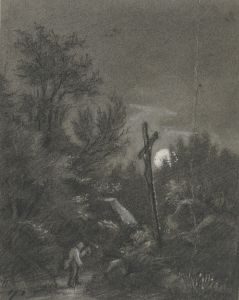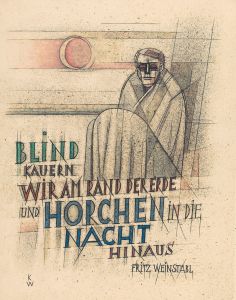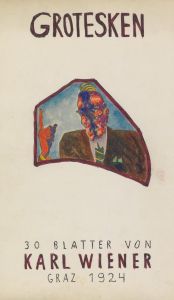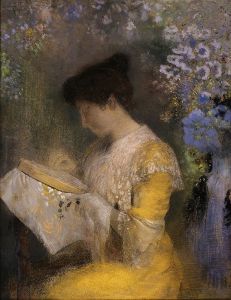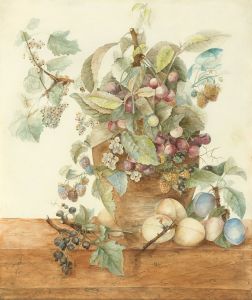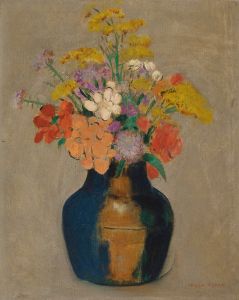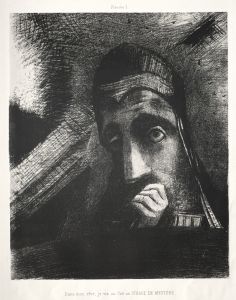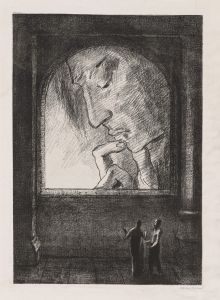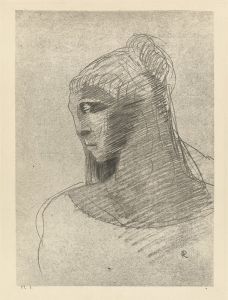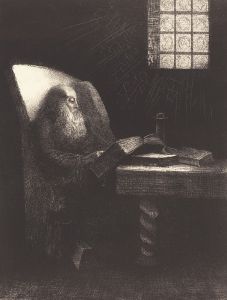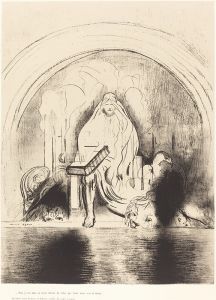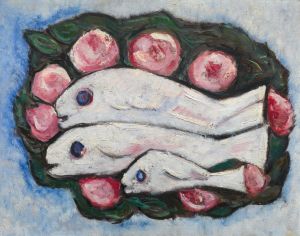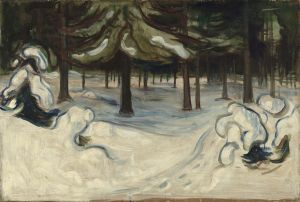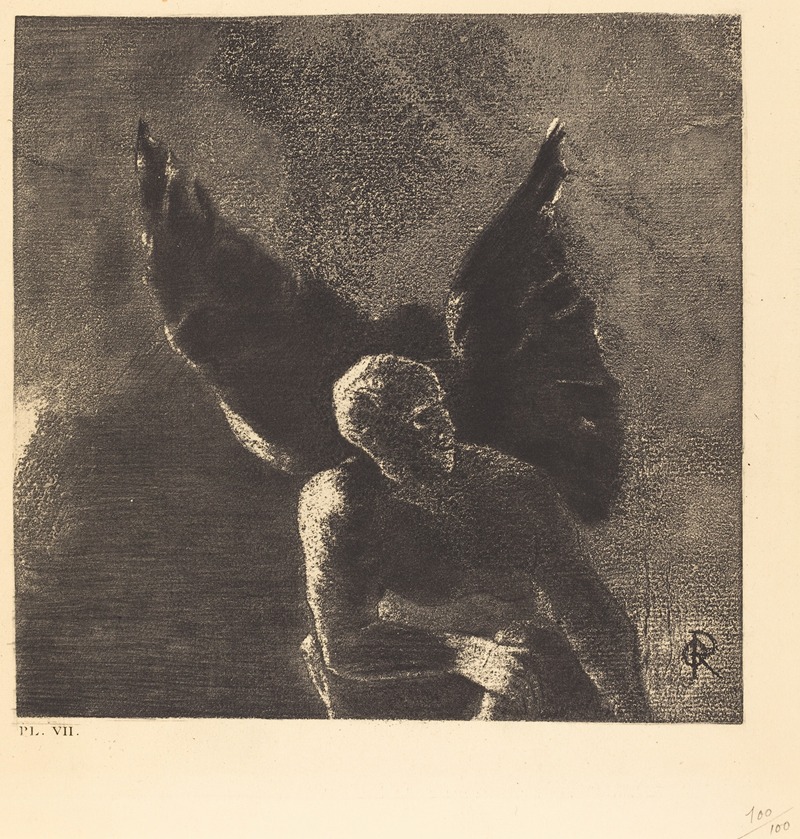
Gloire et louange a toi, satan, dans les hauteurs du ciel ou tu regnas, et dans les profondeurs de l’enfer, ou vaincu, tu reves en silence!
A hand-painted replica of Odilon Redon’s masterpiece Gloire et louange a toi, satan, dans les hauteurs du ciel ou tu regnas, et dans les profondeurs de l’enfer, ou vaincu, tu reves en silence!, meticulously crafted by professional artists to capture the true essence of the original. Each piece is created with museum-quality canvas and rare mineral pigments, carefully painted by experienced artists with delicate brushstrokes and rich, layered colors to perfectly recreate the texture of the original artwork. Unlike machine-printed reproductions, this hand-painted version brings the painting to life, infused with the artist’s emotions and skill in every stroke. Whether for personal collection or home decoration, it instantly elevates the artistic atmosphere of any space.
Odilon Redon (1840-1916) was a French symbolist painter, printmaker, draughtsman, and pastellist. He is best known for his works that reflect a world of fantasy and imagination, often featuring dreamlike and surreal imagery. One of his notable works is "Gloire et louange à toi, Satan, dans les hauteurs du ciel où tu régnais, et dans les profondeurs de l’enfer, où vaincu, tu rêves en silence!" which translates to "Glory and praise to you, Satan, in the heights of heaven where you reigned, and in the depths of hell, where defeated, you dream in silence!"
This artwork is part of Redon's series of lithographs titled "Les Fleurs du Mal" (The Flowers of Evil), inspired by the poetry of Charles Baudelaire. Baudelaire's collection of poems, first published in 1857, explores themes of decadence, eroticism, and the duality of human nature, often invoking the figure of Satan as a symbol of rebellion and defiance against conventional morality.
Redon's lithographs, including this piece, were created in the late 19th century, a period marked by a fascination with the occult, mysticism, and the exploration of the subconscious mind. Redon was deeply influenced by these themes, and his works often reflect a sense of otherworldliness and introspection.
The specific lithograph "Gloire et louange à toi, Satan" depicts a complex and evocative scene that captures the essence of Baudelaire's verse. The image portrays a figure, presumably Satan, in a contemplative and subdued state, surrounded by an ethereal and dreamlike atmosphere. The use of light and shadow, as well as the intricate details, create a sense of depth and mystery, inviting viewers to delve into the symbolic and allegorical meanings behind the work.
Redon's technique in this lithograph, as in many of his other works, demonstrates his mastery of the medium. He skillfully employs a range of tones and textures to create a rich and nuanced composition. The interplay of light and dark, along with the delicate lines and shading, contribute to the overall haunting and enigmatic quality of the piece.
Throughout his career, Redon sought to express the inner workings of the mind and the soul, often drawing on literary and philosophical sources for inspiration. His collaboration with Baudelaire's poetry in "Les Fleurs du Mal" is a testament to his ability to translate complex and abstract ideas into visual form. This particular lithograph stands as a powerful example of Redon's symbolic and imaginative approach to art, capturing the tension between the celestial and the infernal, the divine and the demonic.
In summary, "Gloire et louange à toi, Satan" by Odilon Redon is a significant work within the context of late 19th-century symbolist art. It reflects the artist's fascination with themes of mysticism, the subconscious, and the duality of human nature, as well as his technical prowess in the medium of lithography. The piece remains a compelling and thought-provoking example of Redon's ability to evoke deep emotional and intellectual responses through his art.





